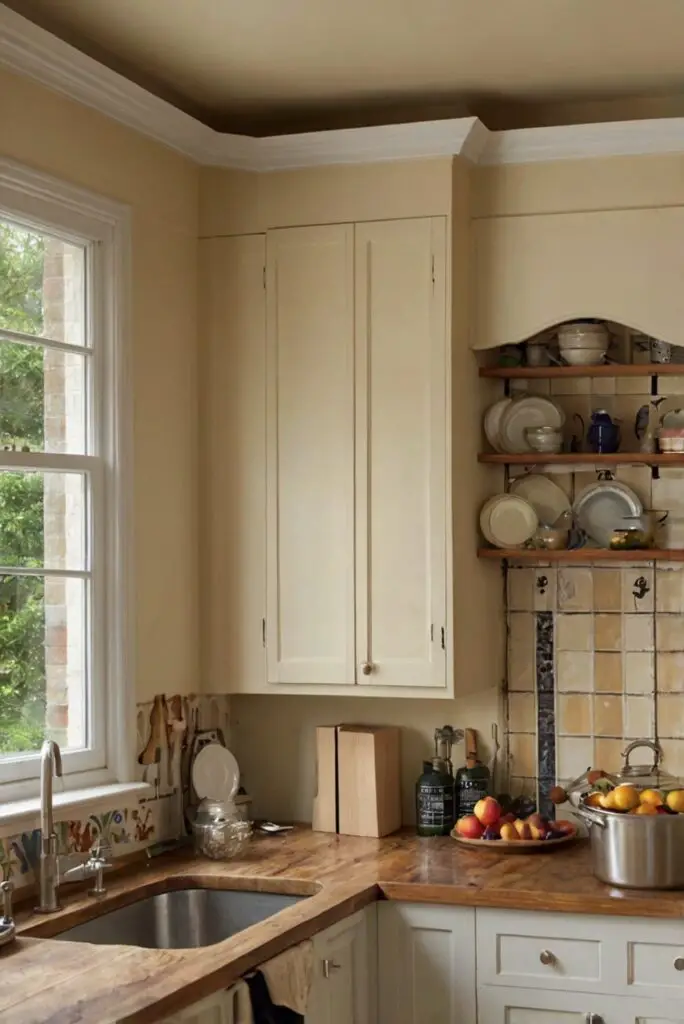Learn how to transform your kitchen walls with the perfect paint finish. Discover tips for a seamless selection process here.
Choosing the right paint finish for your kitchen walls is crucial for achieving the desired look and ensuring durability. As a daily routine with an interior designer, start by considering the functionality of the kitchen space. Opt for a washable and scrubbable paint finish, such as satin or semi-gloss, to withstand grease and stains common in kitchens. When selecting colors, coordinate with the overall color scheme of the kitchen to create a cohesive look. Use a primer paint for walls to ensure better adhesion and coverage. Color matching painting is essential for a harmonious design, so test paint samples before making a final decision. Stay organized by creating a color palette or mood board to visualize the end result. By following these tips, you can transform your kitchen into a stylish and functional space.
Choosing the right paint finish for your kitchen walls is crucial to achieving the desired aesthetic and functionality in your kitchen space. Here are some key considerations and insights to help you make an informed decision:
My Lovely Spring Paint for 2025
Ready for a Spring Makeover? Explore the Freshest 2025 Paint Trends!
White Sage/Green SW Pistachio green Soft blue Honeysweet/Orange Pink Sugar Sage Tint BMAs an Amazon Associate, I may earn a commission from qualifying purchases at no extra cost to you.
**How to determine the best paint finish for my kitchen walls?**
When selecting a paint finish for your kitchen walls, it’s essential to consider the durability, maintenance, and overall look you want to achieve. High-traffic areas like kitchens require paint finishes that are washable and resistant to stains and moisture. Factors such as lighting, color scheme, and kitchen decor also play a role in determining the best paint finish for your walls.
**Can I use a high-gloss finish in my kitchen, and what are the benefits?**
My fAV Spring DECOR for 2025
Discover Spring’s Best 2025 Decor Combinations – Perfect for Any Room!
Oversized Indoor Plants White Curved Sofas Rugs BOH Brown Cream Moroccan Hype Boho Rug Outdoor Patio Furniture Sets Topfinel Pillow CoversAs an Amazon Associate, I may earn a commission from qualifying purchases at no extra cost to you.
A high-gloss finish can be used in the kitchen to create a sleek and modern look. The benefits of a high-gloss finish include its durability, easy maintenance, and ability to reflect light, making the space appear brighter and more spacious. However, it is essential to note that high-gloss finishes can highlight imperfections on the walls, so proper surface preparation is key.
**What is the difference between a matte and satin finish for kitchen walls?**
Matte finishes have a flat appearance and are excellent at hiding imperfections on the walls. They provide a sophisticated and understated look to the kitchen. On the other hand, satin finishes have a subtle sheen that offers a balance between durability and easy maintenance. Satin finishes are more washable than matte finishes and are suitable for kitchens with moderate traffic.
**How can I choose a paint color that complements my kitchen decor?**
When choosing a paint color for your kitchen walls, consider the existing color scheme, materials, and fixtures in your kitchen. Neutral colors like white, gray, or beige are versatile options that can complement various kitchen styles. Bold or contrasting colors can add depth and character to the space but should be used strategically to avoid overwhelming the kitchen.
**Are there eco-friendly paint alternatives for kitchen walls?**
There are plenty of eco-friendly paint options available for kitchen walls that are low in volatile organic compounds (VOCs) and environmentally friendly. Look for paints labeled as “low-VOC” or “zero-VOC” to reduce exposure to harmful chemicals and contribute to a healthier indoor environment. These eco-friendly paints come in a variety of finishes, ensuring you have sustainable options for your kitchen walls.
**Why is it important to consider the lighting in my kitchen when selecting a paint finish?**
Lighting plays a significant role in how paint colors and finishes appear in a space. Natural light can vary throughout the day, affecting the way colors and finishes are perceived. When selecting a paint finish for your kitchen walls, consider the amount of natural light the space receives and choose a finish that complements the lighting conditions. For instance, high-gloss finishes can enhance natural light, while matte finishes can create a cozy atmosphere.
**How to best organize the painting process to ensure a smooth application on kitchen walls?**
Proper preparation is key to ensuring a smooth painting process for your kitchen walls. Start by cleaning and prepping the walls, including patching any holes or imperfections. Use painter’s tape to protect surfaces like countertops and cabinets from paint splatter. Choose high-quality paint and tools for a professional finish. Begin with a primer to provide a smooth base for the paint and apply the paint in thin, even coats for the best results. Allow each coat to dry completely before applying the next one.
**Key Takeaways:**
– Consider the durability, maintenance, and aesthetics when choosing a paint finish for your kitchen walls.
– High-gloss finishes offer a sleek look and are easy to clean but can highlight imperfections.
– Matte finishes provide a sophisticated appearance and are great at hiding imperfections on the walls.
– Choose paint colors that complement your kitchen decor and consider eco-friendly options for a healthier environment.
– Lighting influences how paint finishes appear, so factor in natural light when selecting a finish.
– Proper preparation and organization are essential for a smooth painting process on kitchen walls.







